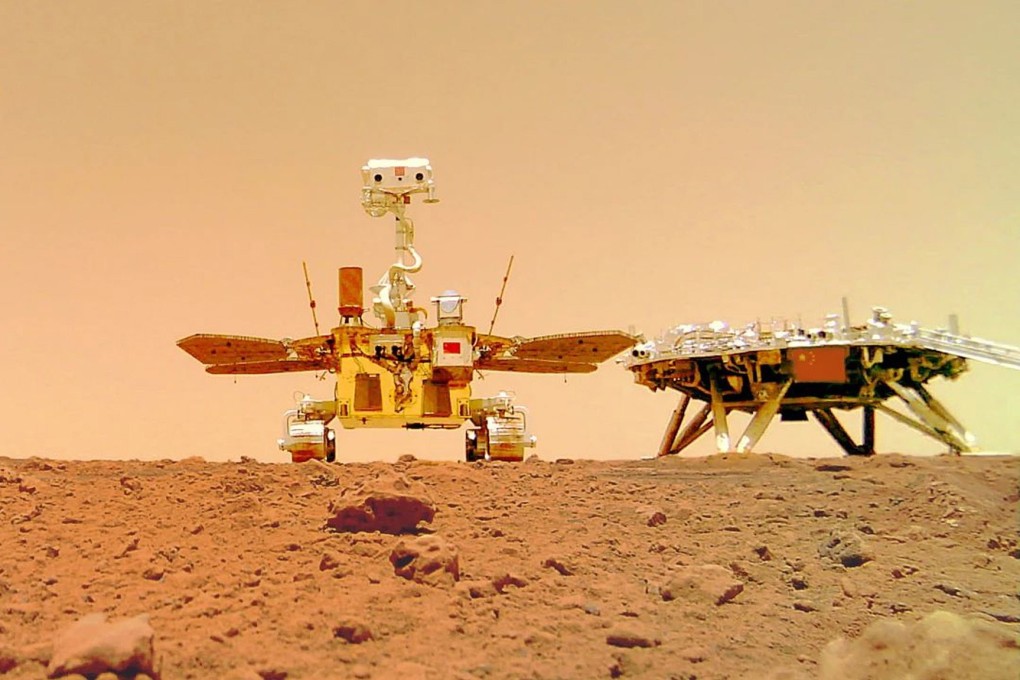Chinese radar study lends weight to theory of ancient ocean on Mars
- Using ground-penetrating radar on the Zhu Rong rover, team found a layer of rocks likely to be sediment from a catastrophic flood 3 billion years ago
- No direct evidence for liquid water was found in the shallow subsurface, but scientists say possibility it exists at lower depths cannot be ruled out

Scientists have used a ground-penetrating radar on China’s Mars rover to find possible evidence of flooding events on the red planet billions of years ago.
Though no direct evidence for liquid water was found in the shallow subsurface, the study lends weight to the theory that the rover’s landing area once hosted an ancient ocean, the team said in a Nature paper published online on Monday.
The researchers from the Chinese Academy of Sciences and Peking University also said the possibility of water existing at lower depths could not be ruled out.
Geologist Chen Ling and her colleagues used the Rover Penetrating Radar (RoPeR) on Zhu Rong to measure the density of rocks, finding a multilayered structure in the upper 100 metres (328 feet) of the basin’s surface.
The radar image showed four horizontal layers formed at different times and through different geological processes. The thickest layer – roughly 30 to 80 metres down from the surface – consists of larger rocks that were likely sediment deposits from a rapid catastrophic flood some 3 billion years ago, the paper said.
The layer above it contains smaller, younger rocks that were likely the result of either weathering, asteroid impacts or regional flooding, according to the researchers.